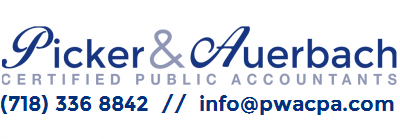
THE economic maelstrom has brought with it tremendous opportunities for financial planning with retirement accounts.
For this year only, people over 70 1/2 with traditional I.R.A.’s and those who inherited these accounts or Roth I.R.A.’s do not have to take the required minimum distributions. Congress suspended that requirement, along with those that apply to 401(k)’s, as part of the Worker, Retiree and Employer Recovery Act, passed in December.
If you want the annual distribution, take it. But leaving the money in your account saves paying the income tax on the withdrawal — if it came from a taxable account — and allows the investments to grow if the market bounces back.
The new law, together with the steep decline in asset values, makes several strategies worth considering:
QUALIFY FOR OTHER TAX BREAKS The lower your overall taxable income, the greater the likelihood that you can take advantage of other tax deductions, said Robert S. Keebler, an accountant with Virchow, Krause & Company in Green Bay, Wis.
Now that the law does not require you to take a minimum distribution, your taxable income may be lower. You can bring it down further by selling investments that have done poorly and subtracting at least some of the losses. (Have your tax adviser navigate the complex rules and run the numbers.) For example, unreimbursed medical and dental expenses are deductible only to the extent they exceed 7.5 percent of your adjusted gross income, so if you lower your adjusted gross income, some of your expenses may qualify.
CONVERT TO A ROTH When you do the conversion, you must pay income tax on the amount you are converting, which may be the whole account or just a portion of it. But converting now is a bargain in two respects, said Barry C. Picker, an accountant and financial planner with Picker & Auerbach in Brooklyn. If the investments subsequently increase in value, that appreciation will be free from income tax. And if tax rates increase later, you will have converted it at today’s lower rates.
Once you have made the conversion, no tax is assessed when the money is withdrawn, subject to certain restrictions. You also avoid the requirement to take yearly minimum distributions beginning at age 70 1/2, which can leave more for your heirs if you don’t use the money yourself.
Starting in 2010, you can do a conversion regardless of your income. For now, you can convert the I.R.A. only if you are single or married filing jointly and your modified adjusted gross income does not exceed $100,000.
ROLL OVER YOUR 401(K) Consider this if you are about to change jobs or are approaching retirement. When you leave a company, you can roll the assets from a company plan directly into a Roth I.R.A. Here, too, you must pay income tax on the account balance, and the $100,000 income limitation applies until 2010.
UNDO A ROTH CONVERSION Let’s say that in December you converted a $100,000 I.R.A., but its value has declined to $70,000. You owe tax on April 15 on $100,000, unless you reverse the transaction — a process called recharacterization. You’re allowed this do-over any time until Oct. 15 of the year after you do the conversion. If you recharacterize after you have filed your return and paid the tax, submit an amended return and claim a refund.
After you have recharacterized, you are not permitted to do another conversion with the same assets until the next year or 30 days after the first conversion — whichever is longer.
If you do another conversion and the market declines further, you can recharacterize again, subject to the waiting period. “It’s like getting to bet on a horse after the race is over,” said Ed Slott, a C.P.A. in Rockville Centre, N.Y.
Each time you do a conversion, create another Roth I.R.A., rather than mixing funds in an existing Roth account, Mr. Slott advised. That makes it much easier to monitor asset performance, and to recharacterize later if necessary.
STOP AUTOMATIC DISTRIBUTIONS If you have been relying on the financial institution holding your account to calculate and pay the required distribution (for instance, monthly or annually), notify it if you want the distribution suspended. Should you receive an I.R.A. distribution in error, you can roll it back into the account within 60 days and not have to pay taxes, said Natalie B. Choate, a lawyer with Nutter McClennen & Fish in Boston. But you can restore the funds only once within a 12-month period, so you will be stuck with any additional payments.
TAKE THE DISTRIBUTION This approach might appeal to wealthy people who prefer to pay the tax now because they expect rates to go up, Ms. Choate said. By taking distributions of low-value stock, you benefit if the stock increases in value and is held for more than a year. Then, if you sell it, that appreciation will be taxed at a 15 percent capital gains rate. In contrast, all withdrawals from a retirement account are taxed at the less favorable ordinary income rates.




